Do you or your travel companion to Japan have gluten intolerance? Are you wondering what and where to eat? Here’s our gluten-free travel guide for Japan so you can enjoy your stay with confidence.
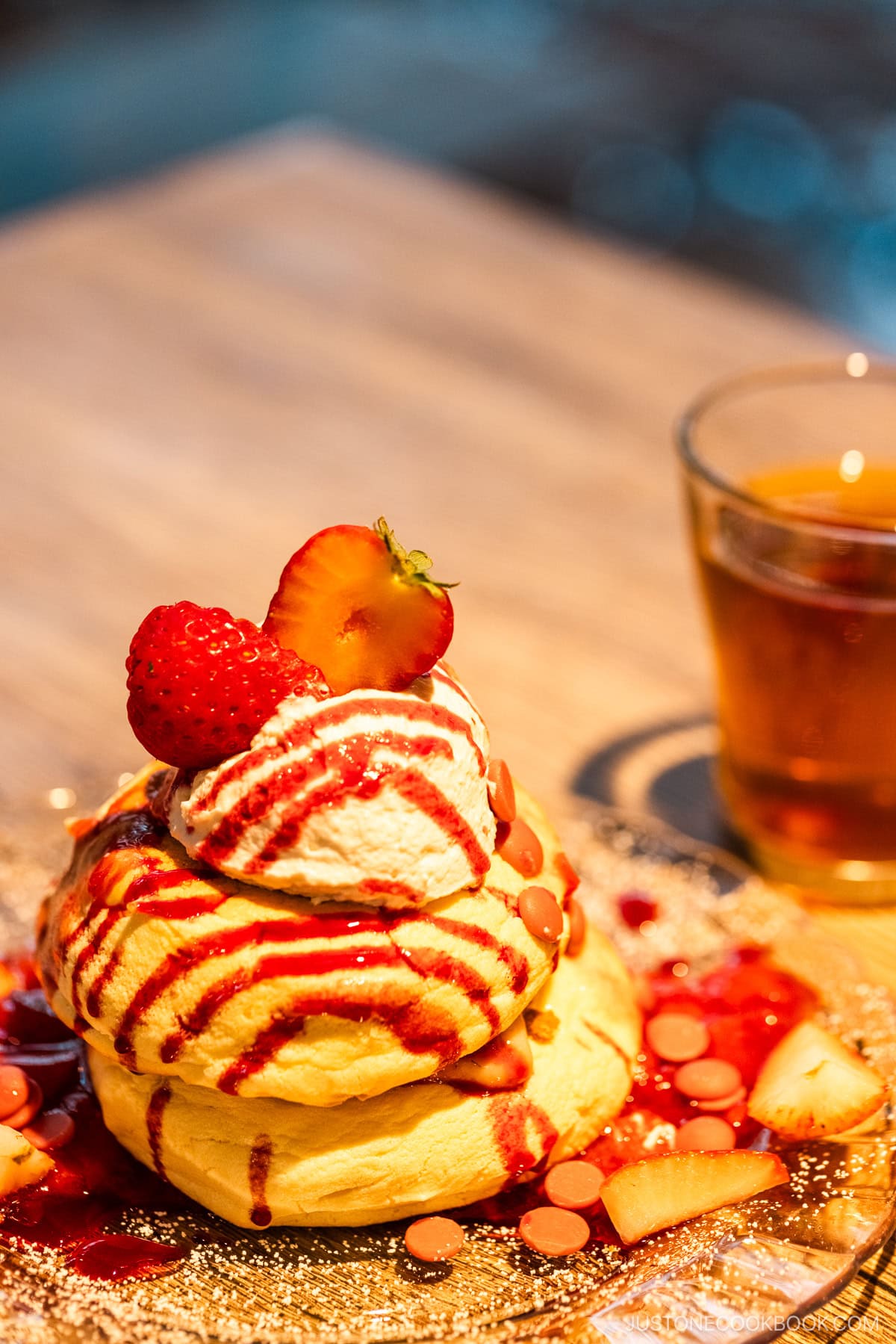

Japan, celebrated as a traveler and foodie destination, is known for its slurp-worthy ramen, sushi, crispy fried tempura, tasty bakery treats, and much more. However, many of these dishes abound in wheat-based ingredients such as soy sauce, miso, processed starch, malt, and barley.
If you have celiac disease or gluten intolerance, traveling to Japan may seem a little out of reach. It doesn’t help with the many unfamiliar ingredients and the potential language barrier to address. Adding to the inconvenience is a general lack of awareness about gluten allergies in the country.
However, don’t let these challenges deter you from visiting Japan! It’s a welcoming country with plenty to see, explore, and experience.
With proper planning and preparation, gluten-free travel in Japan can be an enjoyable and stress-free experience. We’ve put together this guide to help you navigate the eating options and offer helpful tips and alternatives when dining out.
Gluten-Free Restaurants in Japan
If you’re looking for gluten-free restaurants in major cities like Tokyo, Osaka, and Kyoto, click here to see the restaurant list. We’re hoping to grow this list with the help of the JOC community.
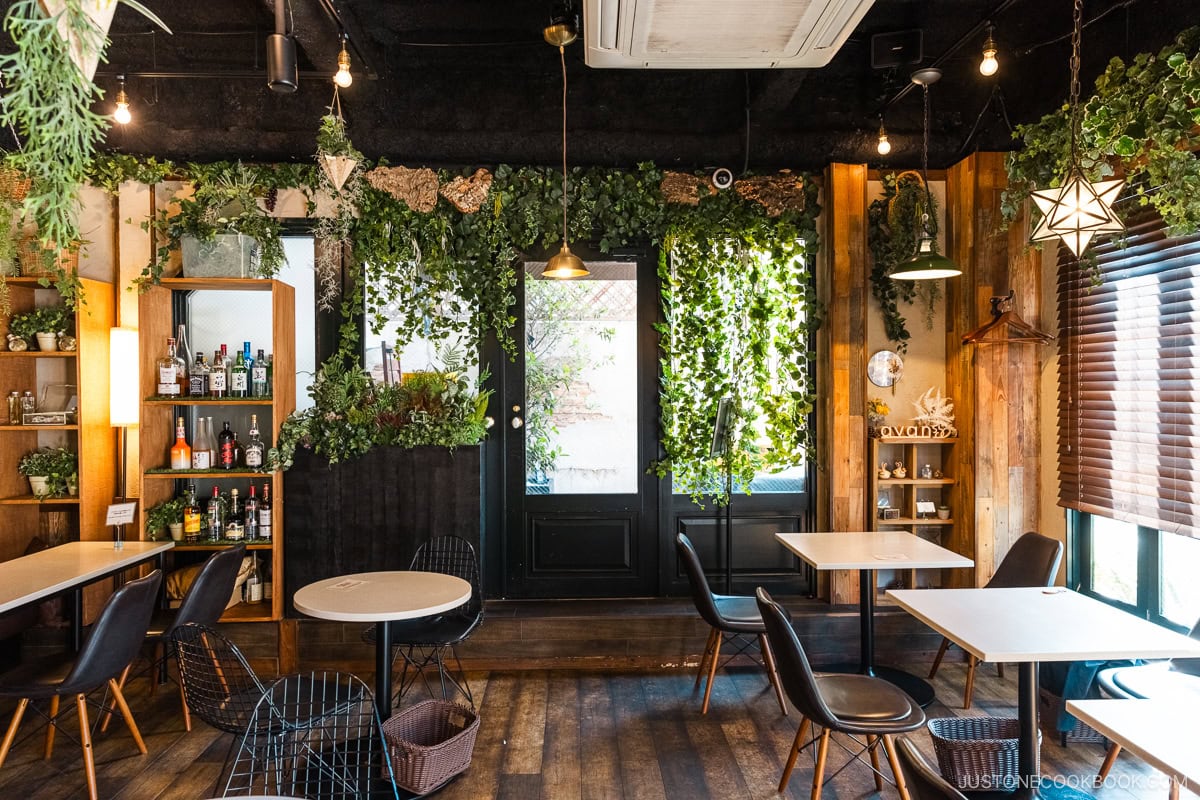

8 Essential Gluten-Free Travel Tips
Over the years, our readers have asked us about gluten-free travel to Japan, so we hope these tips will arm you with the right knowledge and give you a good head start in your planning.
1. Bring a gluten-free translation card
First, we highly recommend bringing along a gluten-free translation card, especially if you don’t speak Japanese. You can download gluten-free cards online with helpful phrases or use translation apps that explain your dietary restrictions to communicate your needs to the restaurant staff.
2. Learn basic phrases
You can learn some basic phrases so you can communicate your dietary needs. Please be aware that many Japanese people may not understand what “celiac” or “gluten” is, so the easiest way to explain is to say you have a “wheat allergy.”
Here are some helpful phrases to know:
- Does this contain wheat? — Komugiko ga haitte imasuka? (小麦粉が入っていますか)
- I have a what allergy. — Watashi wa komugiko ni arerugi ga arimasu. (小麦粉にアレルギーがあります)
- Can I use my own soy sauce? — Jibun no shoyu wo tsukatte iidesuka?
- Gluten-free. — Goo-roo-ten foo-rii. (グルテンフリー)
- Is this gluten-free? — Korewa goo-roo-ten foo-rii desuka? (これはグルテンフリーですか)
3. Bring your own travel-sized gluten-free soy sauce or condiments
You can bring gluten-free soy sauce or other condiments from your home country. You can find them in Japan but it might not be available at regular stores. We think these travel-sized organic gluten-free tamari are super handy. Check your local Asian markets or online stores or Amazon to see if they carry travel-sized gluten-free soy sauce.
Always let the chef and staff know in advance if you’ll be whipping out your GF soy sauce to show respect to the restaurant. Explain to them that you have an allergy and cannot consume wheat or gluten.
4. Learn to identify gluten ingredient names in Japanese
Here are common ingredient names to look out for when you see menus and food labels:
- 小麦・小麦粉 (komugi, komugiko) = wheat
- 大麦 (omugi) = barley
- 麦芽・モルト(bakuga, moruto) = malt
- 全粒粉 (zenryufun) = whole wheat flour
- ライ麦 (raimugi) = Rye
- 小麦澱粉・小麦でん粉 (komugi denko) = wheat starch
- 酵母エキス (kobo ekisu) = yeast extract (may contain gluten)
- グルテン (guruten) = gluten
- 加工澱粉・加工でん粉 (kako denko) = modified food starch
- 水飴・水あめ (mizuame) = starch syrup (may be derived from barley)
- 醤油 (shoyu) = soy sauce (unless it specifically says that it’s gluten-free, it will contain gluten)
- 味噌 (miso) = miso (unless it specifically says that it’s gluten-free, it will contain gluten)
- 酢 (su) = vinegar (unless the label says rice vinegar 米酢, regular vinegar is made of grain vinegar)
5. Check the package label for allergen listing
According to the Japanese Consumer Affairs Agency, packaged foods must list the eight most common food allergens on the back label. This includes shrimp, crab, walnuts, wheat, egg, dairy, and peanuts. An additional 20 food allergens are suggested but not required by law.
The format of the back label may slightly differ according to the manufacturing company, but products with wheat will always list it as “小麦.”
Some packaged foods may say they are gluten free (グルテンフリー or 小麦粉不使用) on the front package, but always check the back label for the proper certification.
6. Explore supermarkets and convenience stores for affordable choices
Supermarkets and convenience stores can be a great place for GF prepackaged meals! If you can read some Chinese characters, you may be able to identify the ingredients. If not, a translation app (such as Google translate or lens) will be helpful.
See the section below for supermarkets and specialtity stores that sell GF products.
7. Call ahead if restaurants can accommodate your needs
Unless the restaurant advertises itself as GF or can accommodate GF diners, do not expect the menu to note GF dishes with a GF label. Some non-GF restaurants may accommodate your dietary needs if you give them advanced notice. Most restaurants will ask for dietary restrictions when making a reservation. Not all restaurant staff are equipped with the proper knowledge, so make sure you clearly state what you cannot eat.
8. Consider booking a room with a kitchen
Travelers with allergies may already know that booking a hotel or Airbnb with a kitchen can solve many meal problems. Whether you bring food from your home country or source ingredients from a nearby supermarket, cooking for yourself is the surest way to avoid cross-contamination. This is most helpful and economical for visitors staying in Japan for an extended duration.
If you bring kitchen appliances, note that the voltage in Japan is 100 volts A.C. If your appliance is higher, you will need a transformer.
9. Join Facebook groups for GF travel or use GF travel companies
You can also crowdsource information from Facebook groups dedicated to GF travel to Japan!
The Find Me Gluten Free website and app features crowdsourced information on GF restaurants, bakeries, cafes, supermarkets, and convenience stores with GF offerings. Gluten-Free Expats Japan is another active FB group that you can join for helpful resources.
If you wish to outsource the itinerary planning or restaurant booking, Gluten-Free Tours Japan, a travel company based in Australia, may be able to assist you.
Supermarkets and Speciality Stores With Gluten-Free Products
Here is a list of supermarkets and specialty health food stores that carry GF products. Note that the GF lineup may vary by branch, and these stores are mostly in the big cities.
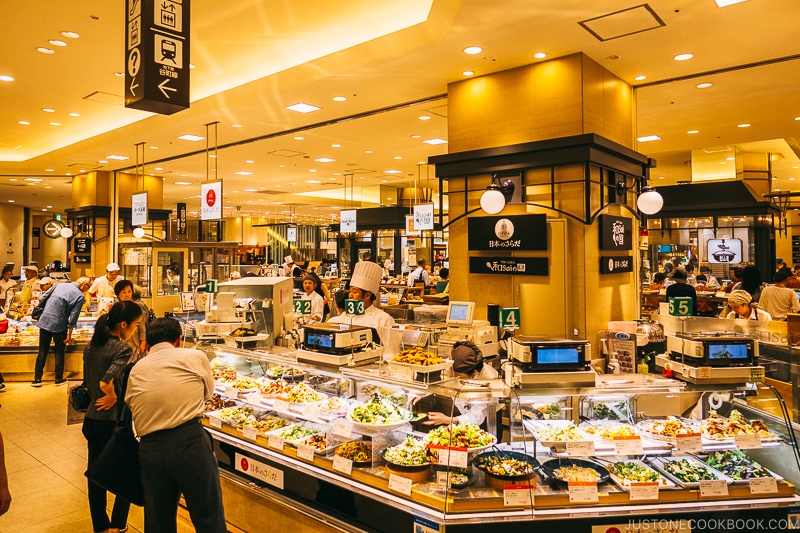

Some safe foods to buy include boiled edamame, processed cheese, unseasoned tofu, boiled eggs, and plain yogurt. Most salads are sold with the dressing separately or with the package on the side. You can also find packaged cut salad greens. For a quick grab-to-go snack, nutrition bars such as SOYJOY are great to have in your bag.
Popular Gluten-Free Japanese Foods and Snacks
Below are some popular Japanese foods, snacks, sweets, and beverages that are safe to consume, but when in doubt, it’s always a good idea to double-check with restaurants, stores, or servers. Communication is key and use your translation card to confirm that they contain no wheat.
100% Buckwheat Soba (Juwari soba, 十割蕎麦)
Soba noodles are delicious hot or chilled, and they can be made with 100% buckwheat or with a mix of buckwheat and wheat. You can bring your own dipping sauce or soy sauce to enjoy with the noodles.
Some high-end soba shops will make 100% buckwheat soba. Soba not made with 100% buckwheat flour entails that the dough is a blend of buckwheat and wheat. To avoid contamination, check if the shop also makes udon dishes and if the noodles are boiled in the same pot.
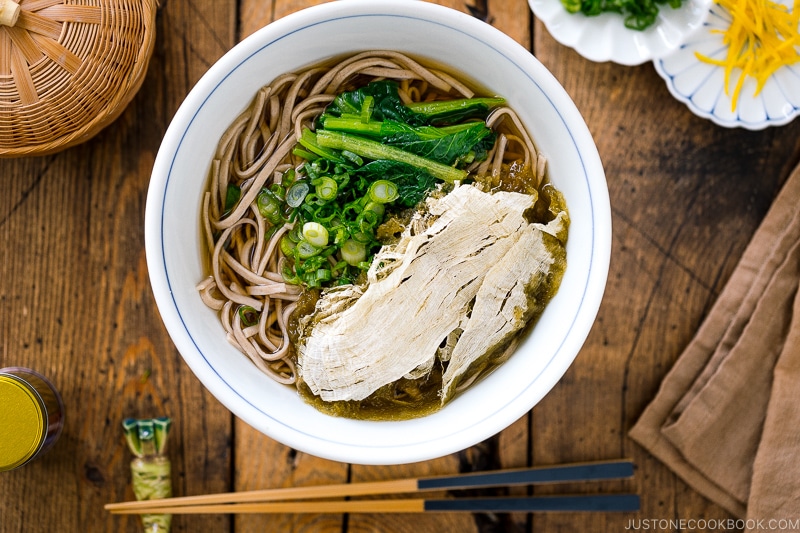

Natto (納豆)
This traditional Japanese superfood made of fermented soybeans is a safe option, as long as you avoid the sauce that comes in a separate package.
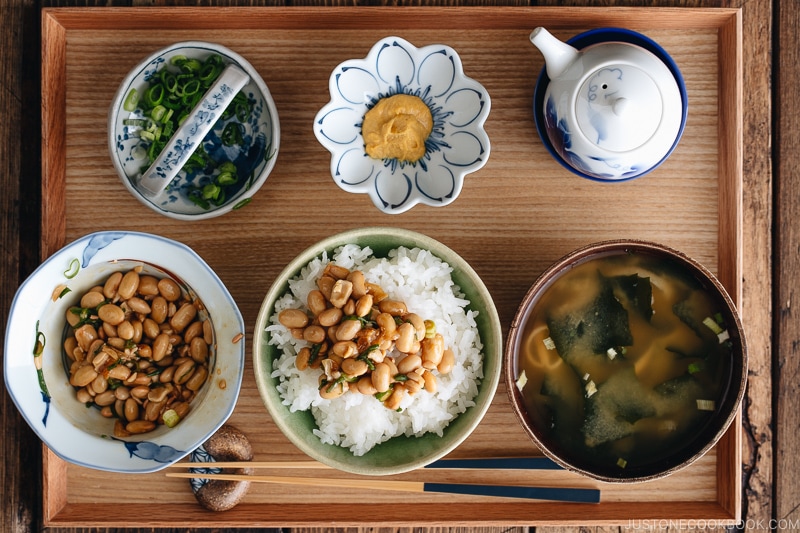

Edamame (枝豆)
These soybean pods are a staple appetizer item at izakaya or sushi restaurants. You can also buy them as a complete protein snack from supermarkets or convenience stores. Make sure they are seasoned with salt, and nothing else.
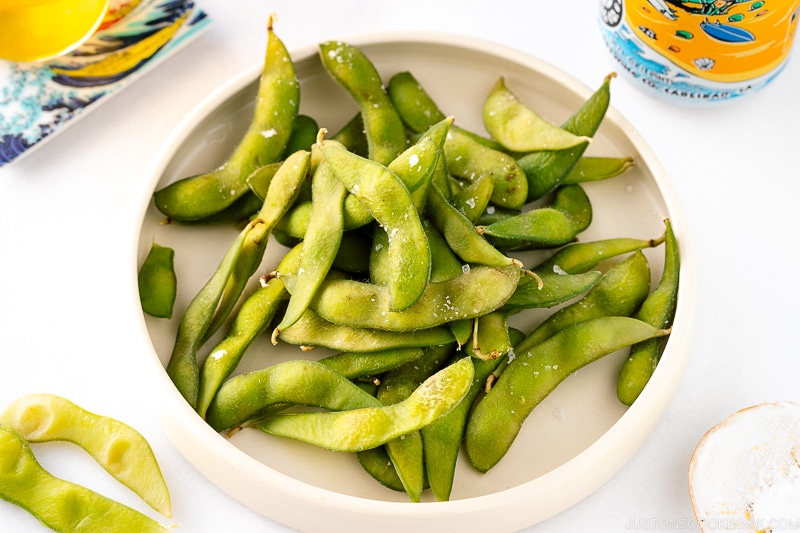

Yaki Imo (Japanese Baked Sweet Potatoes) (焼き芋)
This is a popular Japanese street snack made by slow-roasting sweet potatoes until the skin is crisp and the inside is creamy and slightly caramelized. You can find them sold by street vendors during the fall and winter seasons and at konbini (convenience stores). They are naturally gluten-free and healthy for you too!
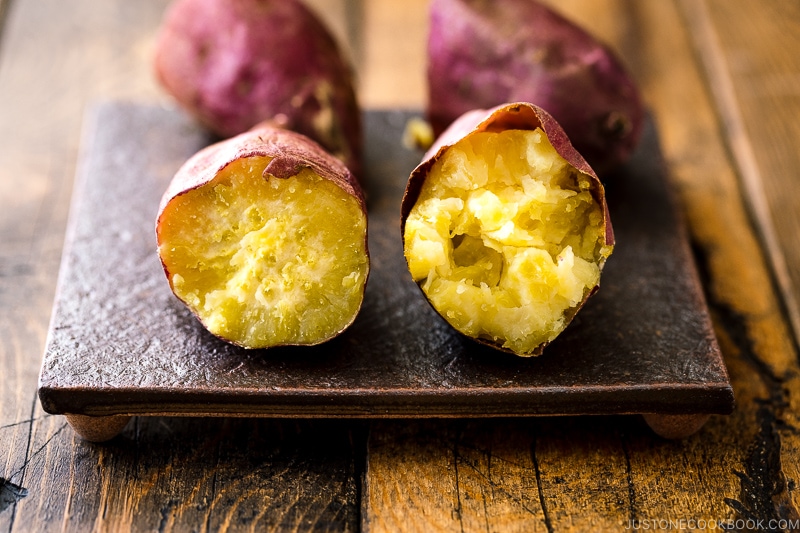

Traditional Mochi Sweets (餅菓子・和菓子)
Daifuku, Hanami Dango, Zenzai, Jelly, and other traditional Japanese sweets (wagashi) are typically made with glutinous rice and are often gluten-free. We recommend trying these yummy treats from stores that make them fresh so they do not contain other additives.
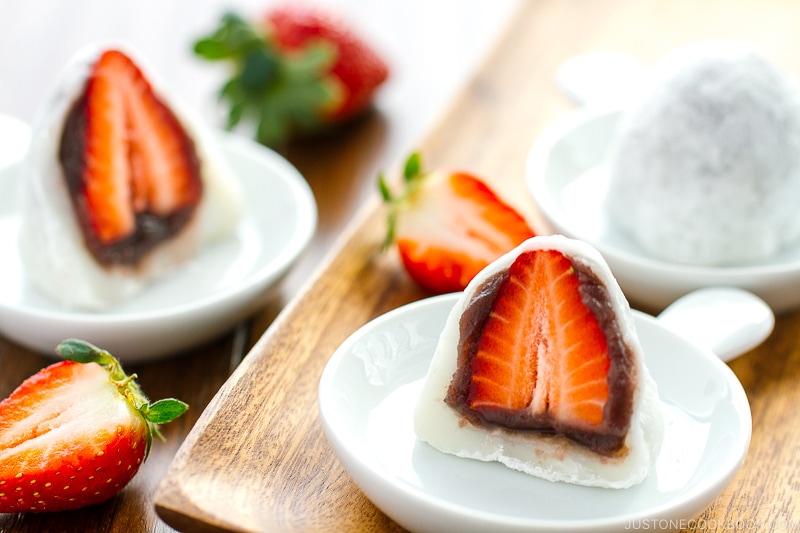

Matcha Beverages and Sweets
Traditional Japanese sweets and drinks with a matcha flavor such as Matcha Latte, Matcha Ice Cream, Matcha Pudding are ususally gluten free. Enjoy delicious matcha treats while you’re in Japan!
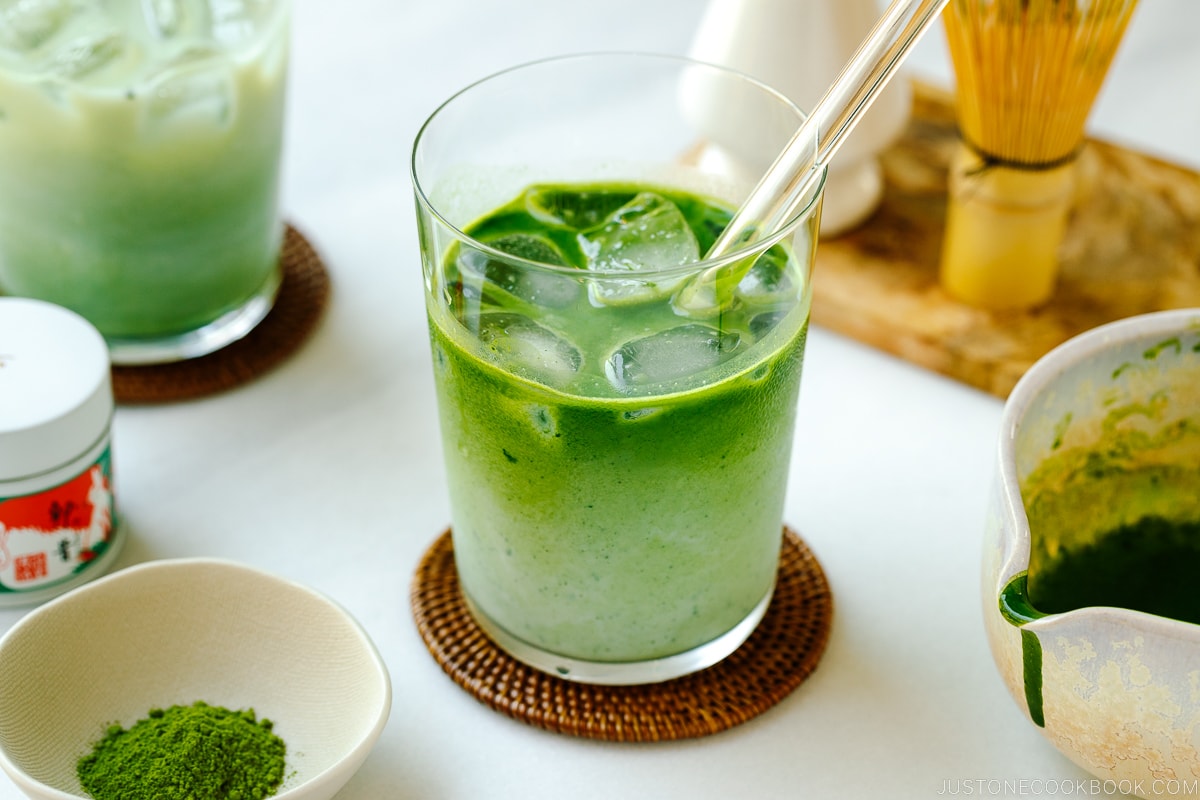

Other Popular Foods to Try But Practice Extra Caution
Sushi and Sashimi (寿司・刺身)
Some sushi restaurants (high end and chains) may allow you to BYO GF soy sauce or provide you with it. Let them know if you will be providing your own. Avoid marinated seafood dishes and those with brown glazes, as they will be seasoned with regular soy sauce.
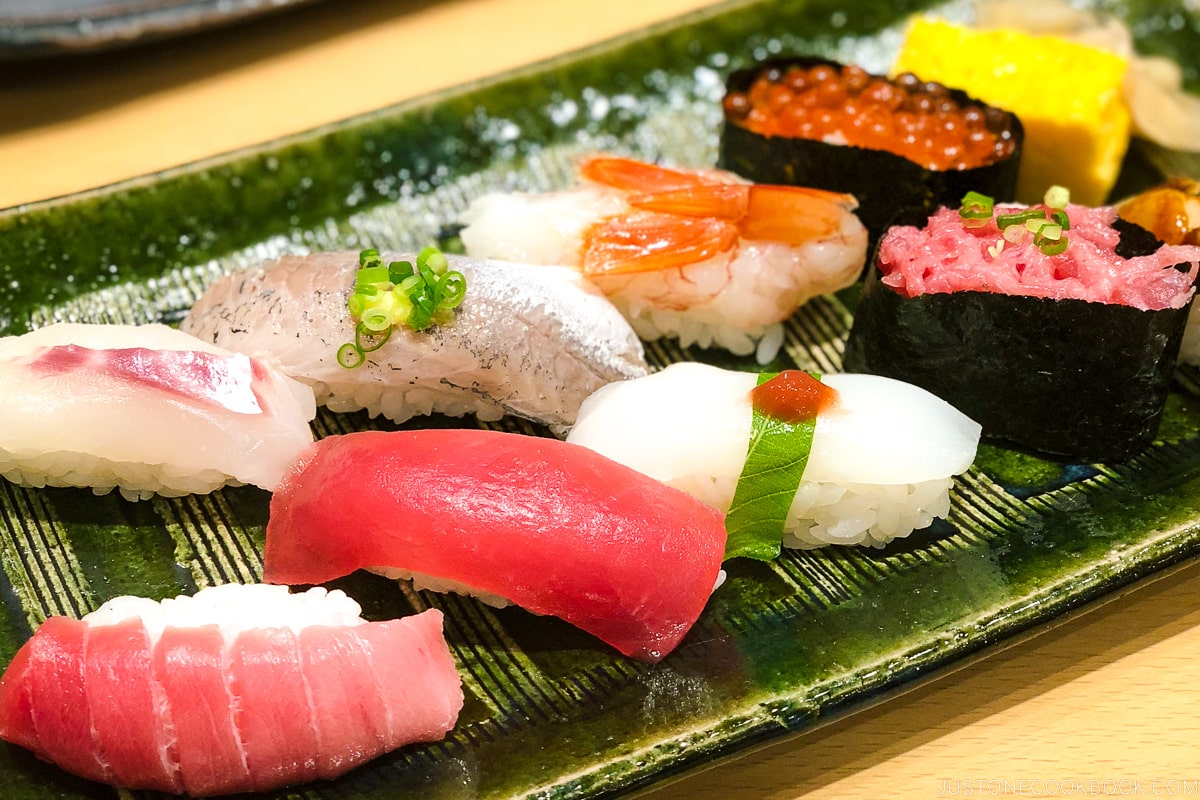

Onigiri (Rice Balls) (おにぎり)
Some prepackaged onigiri with grilled salmon, umeboshi, tuna mayo, shrimp mayo, and sekihan tend to be safe. You can also find onigiri seasoned with just salt. Avoid seasoned seaweed, usually brushed with soy sauce, but plain seaweed should be fine.
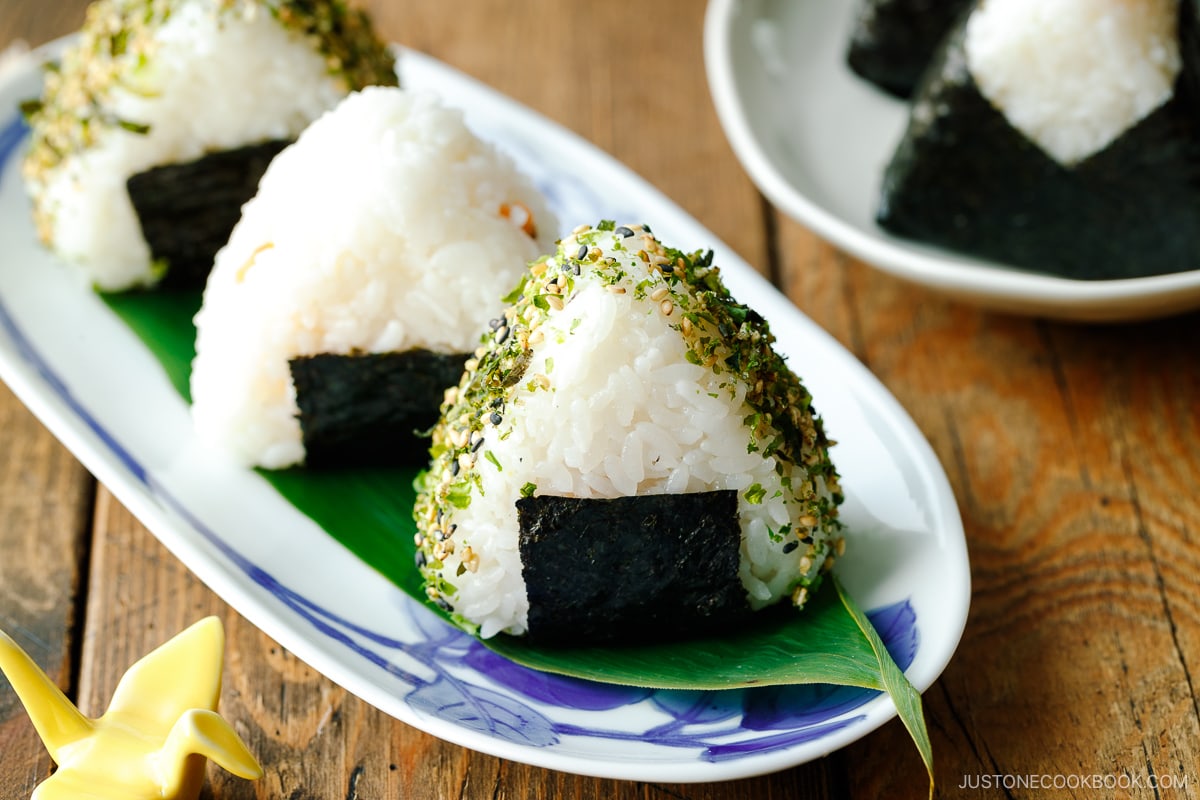

Yakiniku (焼肉)
Yakiniku is Japanese-style BBQ featuring grilled meat and vegetables, typically served with dipping sauces. At these restaurants, diners grill their own meat and veggies, so you can request in advance that your meat be unseasoned and enjoy it with your own sauce or with salt and pepper.
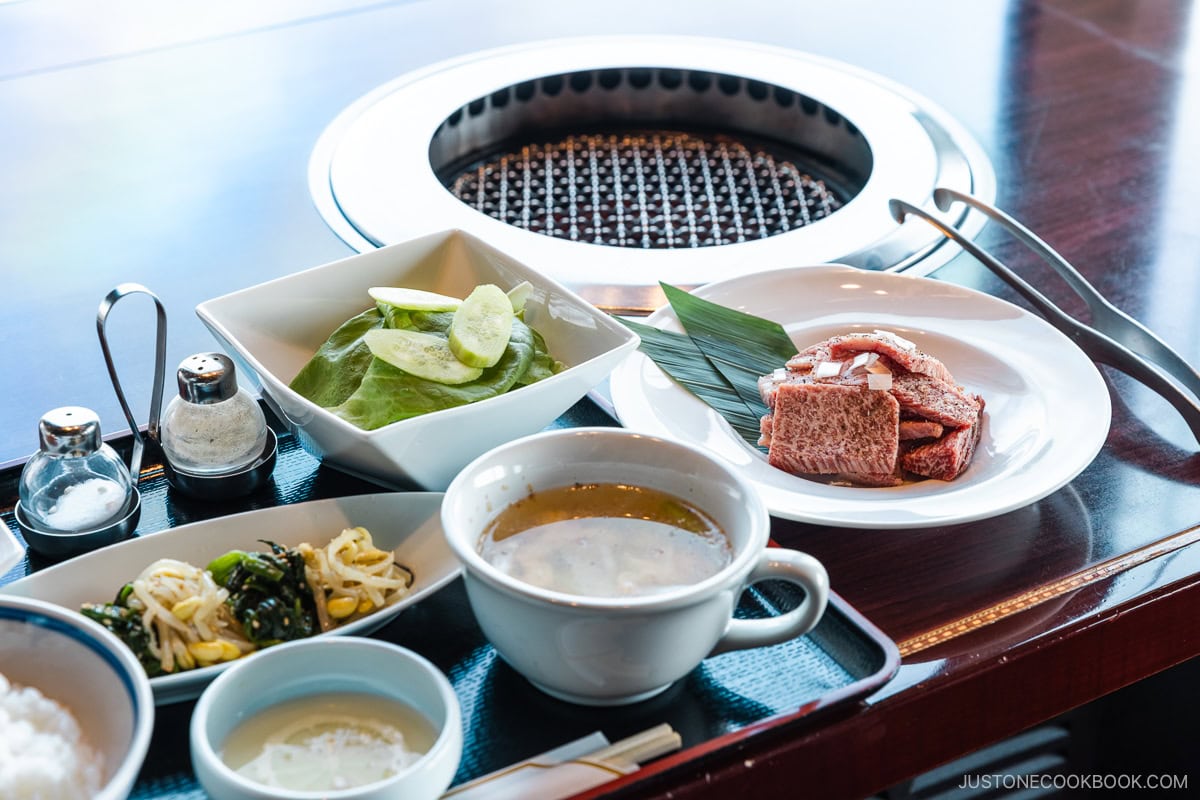

Yakitori (焼き鳥)
These Japanese skewered meat dishes are typically marinated in a soy sauce-based sauce, however, there are also salt-seasoned option. Salt in Japanese is ‘shio 塩’ so ask for shio and no soy sauce/wheat.
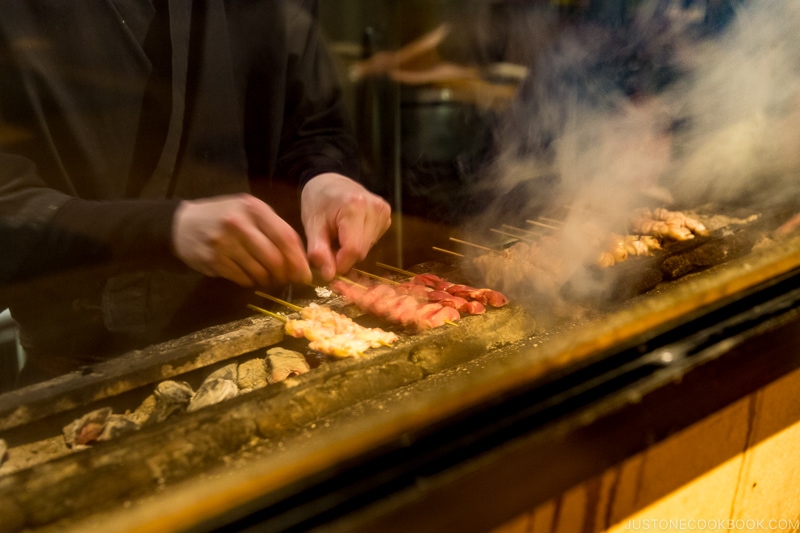

Nabemono (鍋物)
Shabu shabu is a fun dining experience in Japan, and you’ll find national chain hot pot restaurants that offer soup bases without soy sauces or gluten. Sukiyaki is soy sauce-based, so you should avoid it.
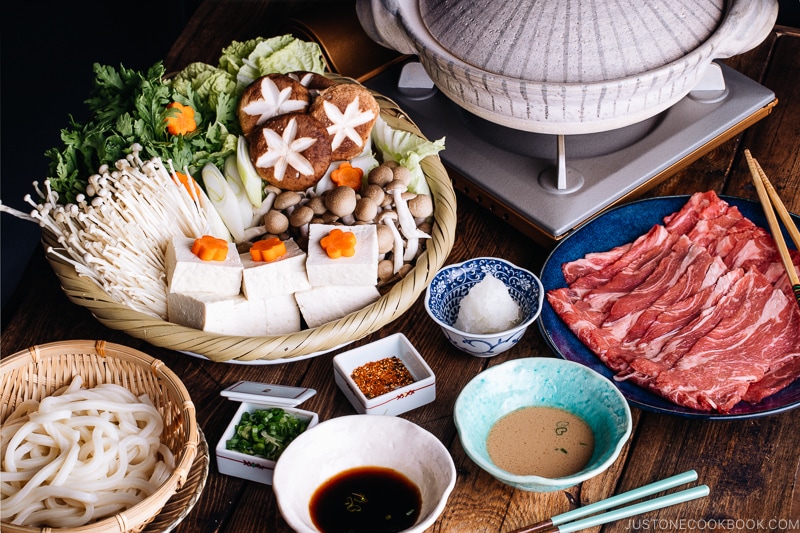

With the rise of international travelers, there has been more awareness of food restrictions and allergies in recent years. We hope this guide will help GF travelers plan out their trip to Japan and be able to enjoy the cuisine during their stay! There’s much more content regarding GF traveling that wasn’t covered here, so we encourage you to research and crowdsource as much information as possible.
Do you have recommendations or tips on traveling to Japan as a GF traveler? Please share in the comment box below!

